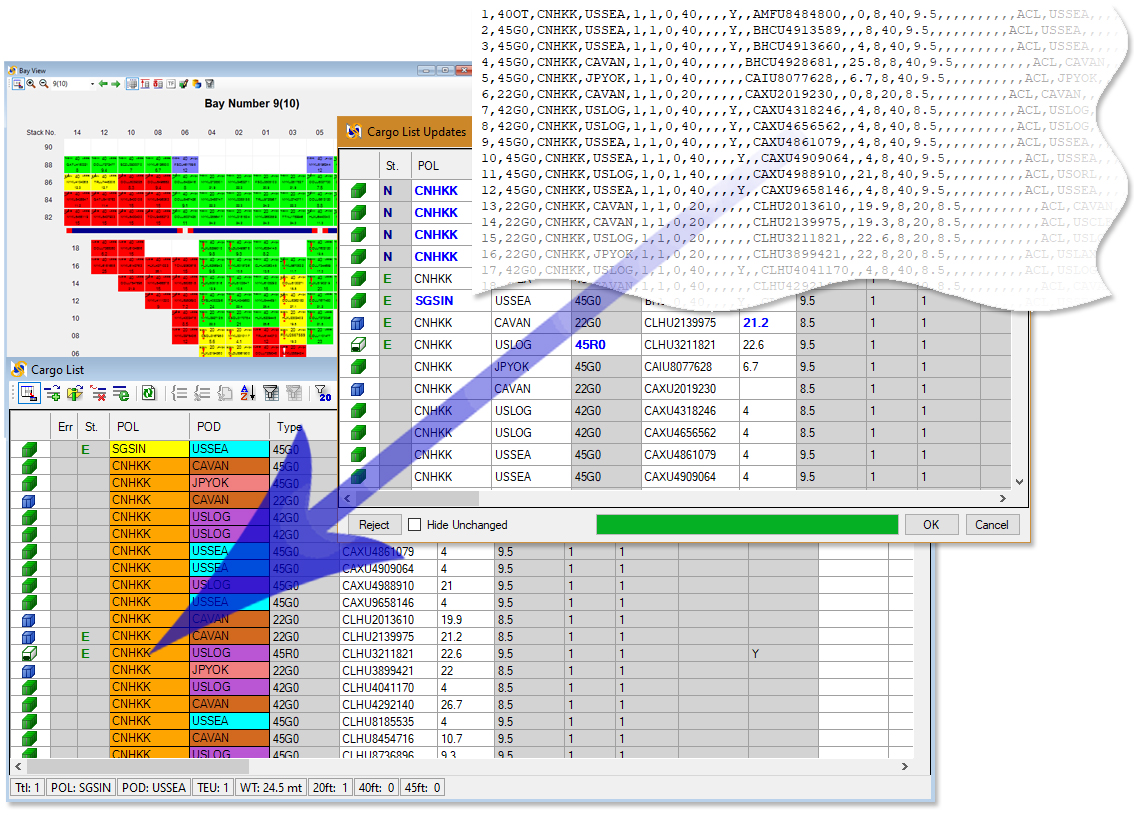News

01/09/2024
Introducing SimpleStabilityThe Next Generation of Ship Stability Assessment Software Released
12/02/2024
SimpleStow ver.2.6 releasedNew and improved version of SimpleStow is available for download

14/09/2022
Another SimpleStow MilestoneCollection of published SimpleStow ship models has surpassed 500 ships.

01/03/2021
SimpleStow is Getting SmarterIntelligent container recognition during the cargo list synchronization
12/02/2020
SimpleStow GC ver.1.3 is releasedUpdated version of general cargo planning software is available for download

09/05/2019
SimpleStow as a BAPLIE viewerUse SimpleStow as a container EDI messages viewer, processor and converter

03/12/2018
SimpleStow GC ReleasedGraphical general cargo stowage planning software is available for download
20/04/2017
New version of SimpleStow is publishedVersion 2.3.2 of container stowage planning software is available for download

30/05/2016
SimpleStow Complies with SOLASNew version of SimpleStow provides means to enter and process Verified Gross Mas

07/05/2015
Bahri Expands SPS LicenseBahri GC expands Autoload SPS license with arrival of new ships
02/01/2015
SimpleStow ver. 2.2 is publishedUpdated version of SimpleStow is now available for download


09/07/2012
Delivery of 4 loading computersLoading computers delivered to 4 CSM multipurpose sister ships

04/07/2011
Release of SimpleStow ver.1.0The first version of SimpleStow container stowage planning software is released!


17/12/2010
Autoload for AAL BrisbaneAMT has delivered loading computer software for m/v AAL BRISBANE

SimpleStow is Getting Smarter
Container data constantly evolves through the cycle of ship stowage planning. At the beginning, there is a rough preliminary list of containers, based on the projected data. Often the only information known about containers is their load and discharge ports, and the container types.
With the time approaching the ship’s arrival in the load port, the container data available to the ship planner is getting more accurate and detailed. At some point, when work on the stowage plan is well in progress, the equipment ID numbers, verified gross mass, the details of hazardous cargo may become known.
SimpleStow enables the user to periodically “synchronize” the working cargo list he uses in the program with the latest information available in the company’s cargo database, updating container quantities and characteristics. That synchronization updates not only the characteristics of containers yet to be stowed, but also containers already allocated in the bay plan.

To synchronize cargo data, the very first task SimpleStow has to perform is to reliably identify containers in the working and in the imported cargo lists. For that purpose, SimpleStow employs three-level containers identification procedure.
If the Equipment IDs are present both in the working list in the program and in the updated cargo list being imported, SimpleStow uses the Equipment ID numbers as the primary identification criterion.
Often the Equipment IDs are not known at the early stages of preliminary planning. In this case SimpleStow relies on the Booking Nos. to identify the containers. Later, when the unique Equipment IDs will become available, they will be added in the characteristics of containers with the respective Booking Nos.
In a very common case, when neither the Equipment IDs nor the Booking Nos. are available in the working plan or in the imported cargo list, SimpleStow uses the combination of the basic characteristics such as POL + POD + Container Type to correctly identify containers to update.
Here is an example of practical application of the “intelligent” container identification in SimpleStow:
Let’s say, a terminal operator receives a preliminary container stowage plan via a BAPLIE message from a shipping line. When imported in SimpleStow, it shows the container stow positions and the mandatory basic information such as POL, POD, container types and weights. At the same time in the terminal operator’s cargo database there are all the detailed characteristics of these containers available: Equipment ID for each container, VGM, hazardous cargo information, position on the yard, etc.
Now, instead of wasting hours and days manually re-entering these characteristics in the stowage plan, the terminal operator simply imports the detailed cargo list into the preliminary plan, and SimpleStow does the rest. In a matter of seconds it identifies containers by the combination of their POL + POD + type, and populates the preliminary bay plan with the detailed container parameters from the TOS cargo database.
In addition to saving time to the terminal ship planner, this function eliminates human errors when manually re-keying container data in the SimpleStow bay plan.
We invite our existing and new customers to download and try the latest version of SimpleStow.
To learn more about the software, visit the SimpleStow Overview page.
